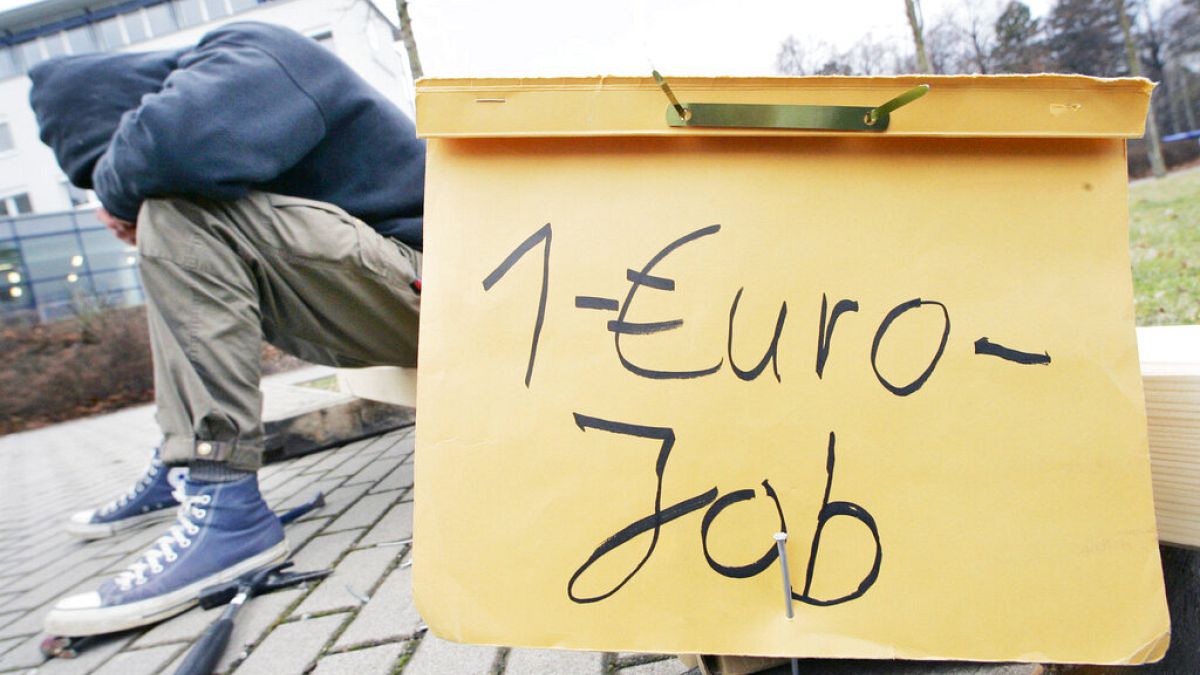Unemployment rates continue to decrease in countries that use the euro. For the European Union as a whole, the unemployment rate stood at 5.9% in August, the same as in May and June.
The unemployment rate in the eurozone fell by one-tenth from July to August, sitting at 6.4%. This is the lowest ever figure for the currency union, according to data released on Monday by the statistics office, Eurostat.
It beats the previous unemployment record set in June this year, and is 0.3 percent lower than the rate in August 2022.
For the European Union as a whole, rather than the economic bloc, the unemployment rate stood at 5.9% in August, the same as in May and June, and it was 0.1 points lower than in July.
Unemployment has fallen sharply in Europe since mid-2021, thanks to a strong economic recovery after the pandemic induced recession.
This comes despite challenges for the eurozone, notably the war in Ukraine and high inflation rates.
Which country had the best numbers?
To look at the bloc's leading economies, Germany has one of the lowest unemployment rates within the EU. Eurostat reported this at 3%, a figure that has remained stable for the past three months.
To take France, unemployment was at 7.3% in August, a slight decrease compared to the previous month. Italy had the same level of unemployment for the month of August, down by 0.1 points and 0.2 points respectively compared with July.
The lowest rates in the EU were recorded in the Czech Republic (2.5%), Malta (2.7%) and Poland (2.8%).
The highest rates were recorded in Spain (11.5%) and Greece (10.9%).
Youth hit the hardest
Young people remain the most affected by unemployment.
In August 2023, the unemployment rate of under 25s was 14% in the EU and 13.8% in the eurozone. Compared to the previous month, the data shows a minor decrease.
Eurostat numbers are based on the International Labour Office (ILO) definition of unemployment. The unemployed are defined as those who have actively sought work in the previous four weeks and are available to start work in the next two weeks.
Will unemployment rates continue to decline?
Unemployment rates are a strong indicator of how well economies are doing. Although such rates do not immediately react to positive or negative inputs, decreasing unemployment rates and low stable rates indicate a rather healthy economy.
Fewer unemployed people means that you are utilising more of your potential workforce, and states end up spending less on social benefits to cover lost wages.
The overall euro area unemployment rate has been decreasing for the past 3 years. In August 2020, it reached 8.6%, its highest level following the COVID-19 full lockdowns implemented earlier that same year.
While unemployment rose sharply because of the pandemic, the figures reached were relatively low compared to the staggering minimum 12% unemployment rate observed for all of 2013 -the highest rate on record for the euro area.
The well-documented relationship between inflation and unemployment is once again showing today: as inflation has remained high in the eurozone over the past two years, unemployment has decreased.
In an attempt to curb high inflation, The European Central Bank (ECB) has increased interest rates. Since the 20th September, the ECB raised its benchmark deposit rate to 4%, the highest on record.
The Euro Area inflation rate of 5.2% for August 2023, although expected to decrease in September, is well above the 2% target the ECB is aiming for.
But just as unemployment and inflation rates are known to react with one another, interest rates also play a role. The higher they are, the more consumers and businesses may be reluctant to spend, eventually leading to higher unemployment.
For now, the ECB estimates that both unemployment and inflation rates will continue to decrease in the coming months.



